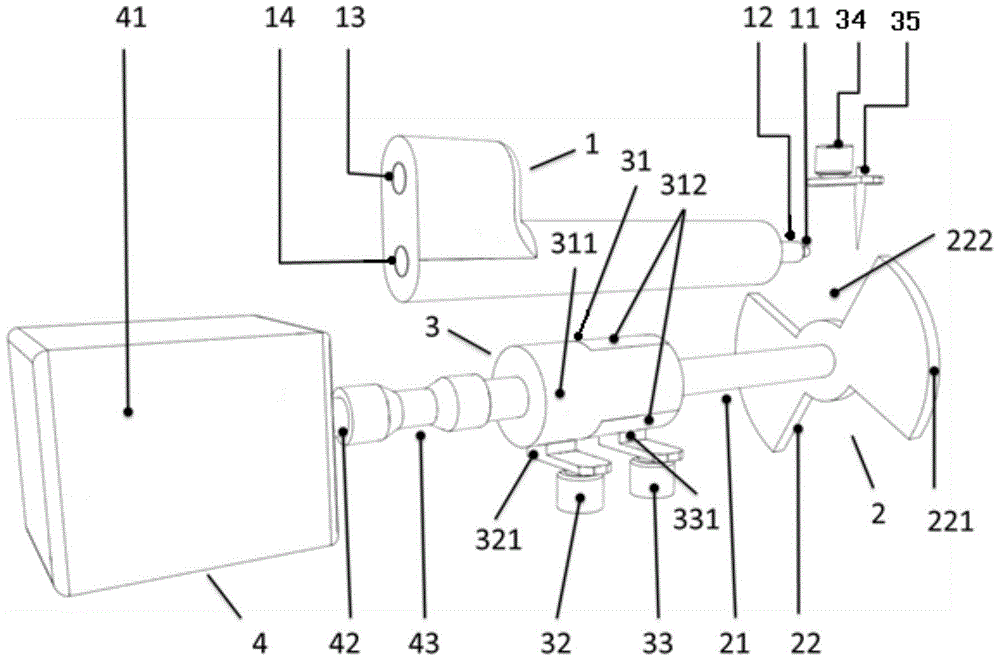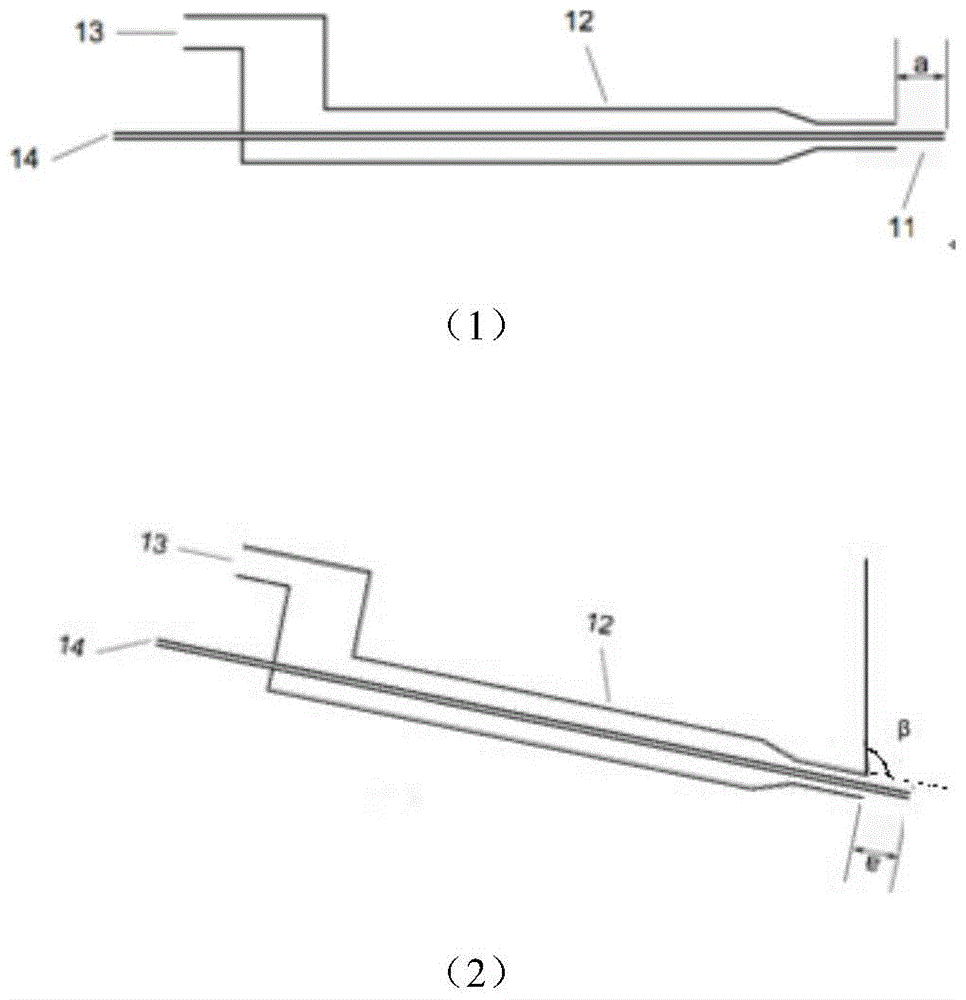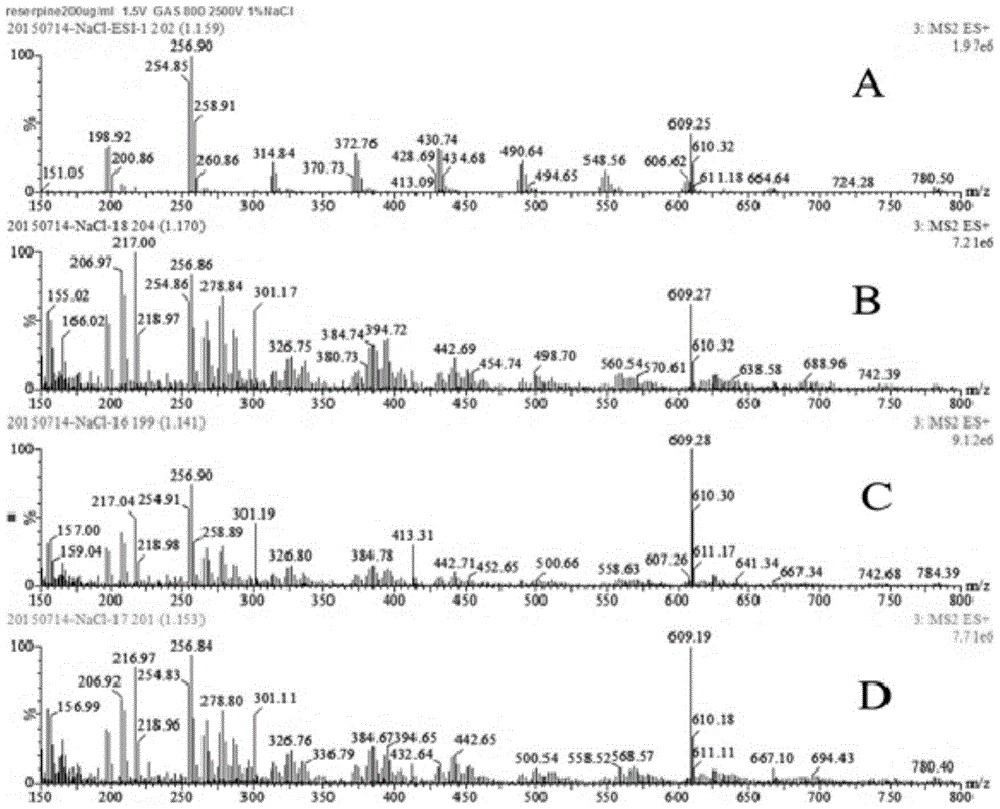Salt-tolerant liquid chromatography, electrospray mass spectrometry coupled interface device and method of using the same
A technology of electrospray mass spectrometry and liquid chromatography, applied in the field of liquid chromatography-mass spectrometry, to achieve the effects of enhanced detection sensitivity, less sample consumption, and rapid sample detection
- Summary
- Abstract
- Description
- Claims
- Application Information
AI Technical Summary
Problems solved by technology
Method used
Image
Examples
Embodiment 1
[0037] Example 1 as figure 1 and figure 2 As shown, a salt-resistant liquid chromatography electrospray mass spectrometry interface device mainly includes: liquid phase spray generation module 1, rotating block module 2, probe high-voltage on-off module 3 and power module 4;
[0038]Wherein, the liquid phase spray generating module includes a liquid nozzle 11, an air nozzle 12, an air pipeline 13 and a liquid pipeline 14; one end of the liquid nozzle is connected to the liquid pipeline, and the liquid pipeline is connected to the liquid chromatography. Connected; one end of the gas path nozzle is connected to the gas path pipeline, and the gas path channel is connected to the atomized gas; the outlet end of the liquid path nozzle protrudes 1 mm laterally from the outlet end of the gas path nozzle;
[0039] The rotating block module includes an insulating part 21 and a block 22; the block is composed of two sets of block leaves 221 and block gaps 222, and the fan angle of the...
Embodiment 2
[0050] The similarities with Embodiment 1 will not be repeated, the difference is that: the outlet end of the liquid path nozzle is 0.5mm protruding from the outlet end of the gas path nozzle, and the flap has a fan-shaped flap gap with an angle of 120 degrees , the position of the insulating part of the conductive half-ring component corresponds to the notch of the blocking plate; the maximum speed of the electric motor is 1500rpm.
Embodiment 3
[0052] In order to test the effect of the present invention, the device provided in Example 1 and Waters I Class UPLC / Xevo TQ MS (Waters Group, USA) were used to carry out comparative experimental research on high-salt reserpine (1% NaCl).
[0053] 1. Experimental materials
[0054] 1.1 Analytes to be measured
[0055] Reserpine standard product (National Institute for Food and Drug Control, Beijing), batch number: 100041-201213. First use 1% formic acid methanol to make a 1mg / mL mother solution, and store it properly in the refrigerator. During the experiment, dilute it with methanol to a suitable concentration for the experiment.
[0056] 1.2 1% sodium chloride methanol solution (A)
[0057] Weigh 5g of sodium chloride (analytical grade, Chengdu Kelong Chemical Reagent Factory), add 100mL of high-purity water to dissolve, then add 400mL of methanol, and ultrasonically mix for 30min.
[0058] 2 Experimental methods
[0059] Column: ACQUITY UPLC BEH-C 18 Column, the packi...
PUM
 Login to View More
Login to View More Abstract
Description
Claims
Application Information
 Login to View More
Login to View More - R&D
- Intellectual Property
- Life Sciences
- Materials
- Tech Scout
- Unparalleled Data Quality
- Higher Quality Content
- 60% Fewer Hallucinations
Browse by: Latest US Patents, China's latest patents, Technical Efficacy Thesaurus, Application Domain, Technology Topic, Popular Technical Reports.
© 2025 PatSnap. All rights reserved.Legal|Privacy policy|Modern Slavery Act Transparency Statement|Sitemap|About US| Contact US: help@patsnap.com



